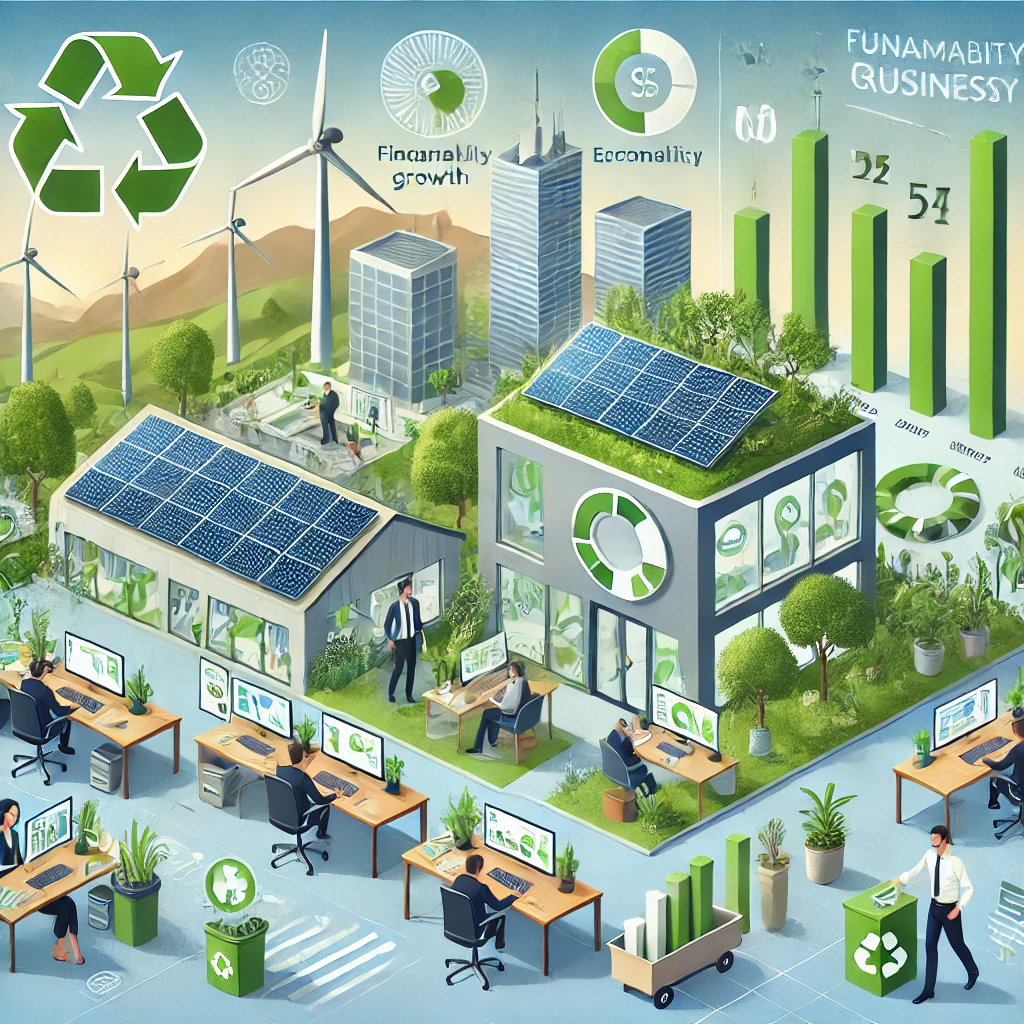Sustainability is no longer a buzzword—it’s a business imperative. As the effects of climate change become more evident, consumers, investors, and governments are demanding that companies take responsibility for their environmental impact. The good news is that adopting sustainable business practices isn’t just about doing the right thing—it’s also a proven path to profitability. Here, we’ll explore actionable ways companies can embrace sustainability while maintaining a competitive edge.
Why Sustainability Matters for Businesses
Sustainability is no longer optional; it’s a cornerstone of modern business strategy. Companies that integrate sustainable practices gain trust, build brand loyalty, and reduce risks associated with environmental regulations. A recent study by Nielsen found that 73% of global consumers are willing to change their consumption habits to reduce their environmental footprint. Businesses that align with these values are positioned to thrive in a changing marketplace.
Moreover, sustainable practices can lead to significant cost savings. For example, energy-efficient manufacturing processes and waste reduction strategies can decrease operational costs. At the same time, businesses that prioritize sustainability often attract socially conscious investors and enjoy better access to funding.
Key Strategies for Sustainable Business Practices
1. Energy Efficiency and Renewable Energy
Transitioning to renewable energy sources like solar, wind, or hydroelectric power is one of the most impactful steps a business can take. By investing in energy-efficient technology, companies can reduce energy consumption and lower utility bills.
For instance, tech giants like Google and Apple have committed to running their operations entirely on renewable energy. These initiatives not only reduce carbon emissions but also enhance the companies’ reputations as industry leaders in sustainability.
How to Start:
- Conduct an energy audit to identify inefficiencies.
- Install LED lighting, smart thermostats, and energy-efficient HVAC systems.
- Partner with renewable energy providers to source clean energy.
2. Waste Reduction and Circular Economy
Adopting a circular economy model means designing products and systems that minimize waste by reusing, recycling, or composting materials. Companies like Patagonia and IKEA have pioneered this approach by offering repair services and using recycled materials in their products.
How to Start:
- Audit your supply chain to identify areas where waste can be reduced.
- Implement recycling programs within the workplace.
- Design products with end-of-life recyclability in mind.
3. Sustainable Supply Chain Management
A company’s environmental impact extends beyond its own operations to its suppliers. Ensuring that your supply chain aligns with your sustainability goals is crucial. Look for suppliers who prioritize ethical labor practices, use eco-friendly materials, and minimize emissions.
How to Start:
- Set sustainability criteria for selecting suppliers.
- Monitor supplier performance through audits and reporting.
- Collaborate with suppliers to innovate and reduce their environmental impact.
4. Green Product Design
Eco-friendly products are in high demand, and businesses that create sustainable alternatives can capture new markets. This involves using biodegradable or recycled materials, reducing packaging, and designing products with a longer lifespan.
How to Start:
- Research sustainable materials and incorporate them into product design.
- Eliminate unnecessary packaging or switch to biodegradable options.
- Educate consumers about the environmental benefits of your products.
5. Employee Engagement and Sustainability Culture
Building a sustainable business starts from within. When employees are engaged and aligned with a company’s sustainability goals, the results are more impactful. Encourage employees to participate in green initiatives and provide training on sustainable practices.
How to Start:
- Create a green team to champion sustainability projects.
- Offer incentives for employees who propose eco-friendly solutions.
- Organize workshops to educate staff on reducing their environmental impact.
Financial Benefits of Going Green
One of the biggest misconceptions about sustainability is that it’s expensive. In reality, sustainable practices often lead to cost savings and increased revenue. Here’s how:
- Lower Operating Costs: Energy-efficient systems and waste reduction save money in the long run.
- Increased Revenue: Consumers are willing to pay a premium for sustainable products. According to a report by IBM, 57% of consumers are willing to change their purchasing habits to help reduce environmental impact.
- Access to Capital: Many investors prioritize funding companies with strong environmental, social, and governance (ESG) metrics.
- Brand Loyalty: Companies that demonstrate a commitment to sustainability often enjoy greater customer loyalty and positive brand recognition.
Case Studies: Companies Leading the Way
Unilever
Unilever’s Sustainable Living Plan focuses on reducing environmental impact while increasing positive social contributions. By 2025, the company aims to make all of its plastic packaging reusable, recyclable, or compostable.
Tesla
Tesla’s mission to accelerate the world’s transition to sustainable energy has revolutionized the automotive industry. By producing electric vehicles and investing in solar energy, Tesla has shown that sustainability can drive innovation and profitability.
Starbucks
Starbucks is committed to reducing its environmental footprint by eliminating single-use plastics and sourcing 99% ethically grown coffee. These efforts resonate with its environmentally conscious customer base.
Overcoming Challenges
While the benefits of sustainability are clear, some companies hesitate to adopt green practices due to perceived barriers. Common challenges include upfront costs, lack of expertise, and resistance to change. However, these obstacles can be overcome by:
- Starting small with low-cost initiatives like reducing office waste.
- Partnering with sustainability consultants to identify opportunities.
- Communicating the long-term financial and reputational benefits to stakeholders.
The Future of Sustainable Business
Sustainability is not just a trend—it’s the future of business. Companies that fail to adapt risk losing customers, investors, and relevance in a rapidly changing world. By integrating sustainability into their core strategies, businesses can drive innovation, reduce costs, and contribute to a healthier planet.
Final Thoughts
Adopting sustainable business practices is a win-win for companies and the planet. From energy efficiency to green product design, there are countless ways for businesses to make a positive impact while boosting profitability. By taking action today, companies can lead the charge toward a more sustainable and prosperous future.



